“It looks as if we have something here,” Jorge our boss exclaimed the minute we got to our Centenario dig site. I walked over and saw the tiny bit of black bone poking out of the ground. This is how it always starts, a little bit of black bone.
Jorge settled in and began to carefully excavate around the small black spot with a screwdriver and a paintbrush. He also covered it with a special glue called paraloid to stabilize it. Every few minutes Dipa and I checked in to see the progress and we all got more and more excited when we saw how much of the bone was exposed. We each called out different guesses as to what kind of bone it could be until at last enough of it was uncovered to determine it was a vertebra.
The fossil received a good coating of paraloid and then we covered it with a bag and sediment to keep it safe until we returned the next day.
We returned the next day to prepare a protective plaster jacket so we could take the fossil back to our lab. There are many ways to make a plaster jacket; the one you pick depends on the size of your specimen and how fragile it is. We first covered the fossil with a layer of toilet paper tapped down with wet paintbrushes. We filled any depressions with wads of wet toilet paper and continued to apply layer upon layer of paper dabbed with water. It looked like a giant paper mache spit ball when we were finished. Then we prepared the plaster bandages by putting them in a bag filled with water.
The bandages were applied in a crisscross pattern and pressed in as close as possible so no spaces existed between the toilet paper mache and the bandages. All areas of the specimen were covered with two layers of plaster bandages. After the plaster dried Jorge carefully used a screwdriver to chisel underneath the fossil to release it from the hillside and turn it over.
The entire process was repeated on the now “top” side of the specimen until the whole rock was covered in hard plaster.
We then cautiously transported our “baby” fossil back to the truck and to our lab at The Smithsonian Tropical Research Institute.
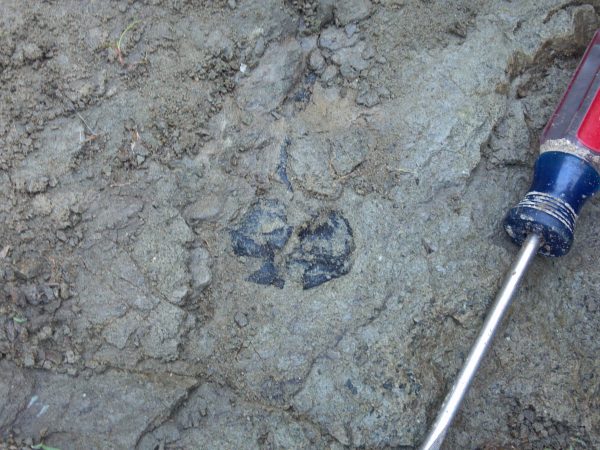
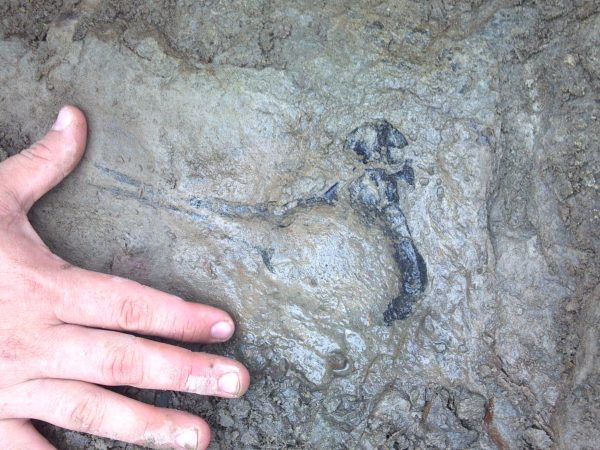
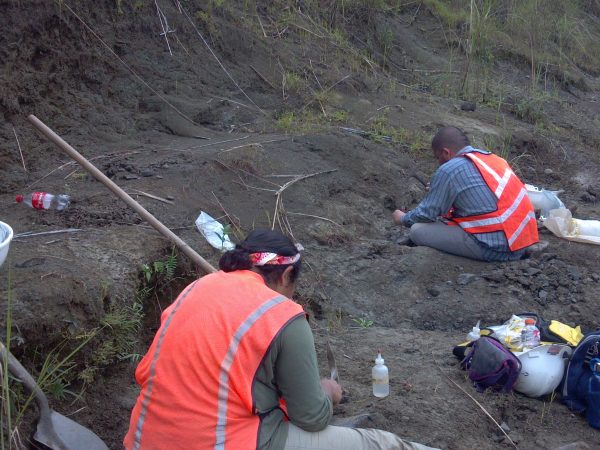
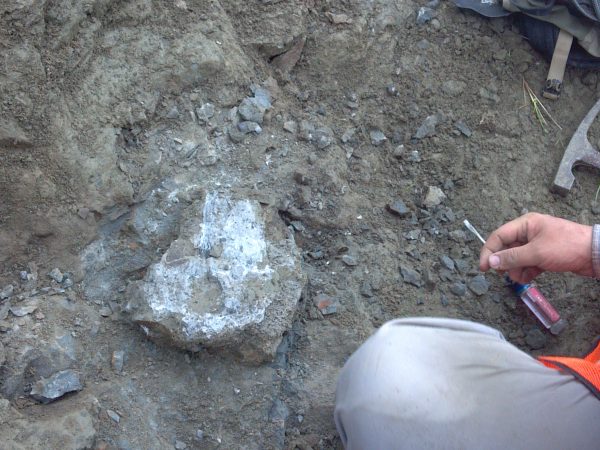
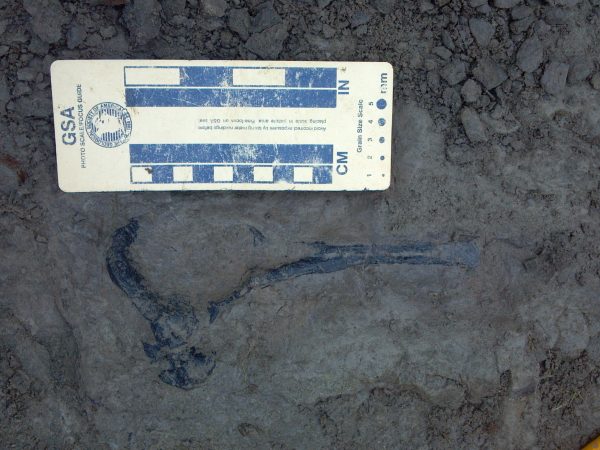
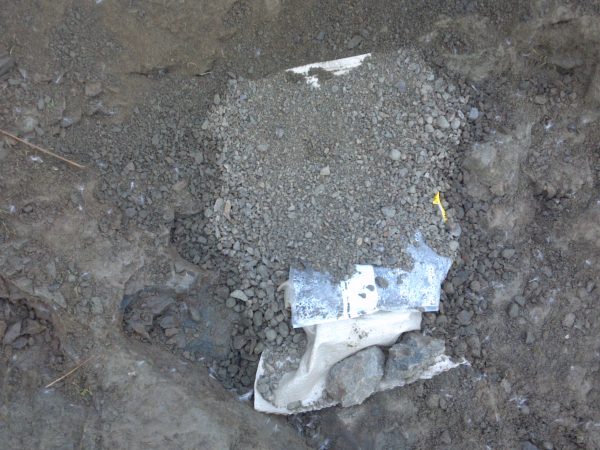
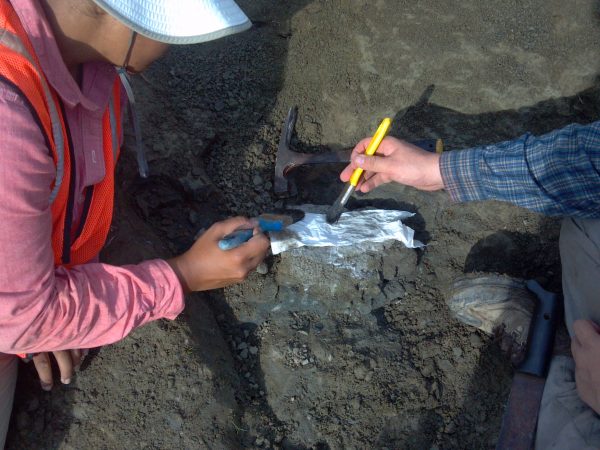
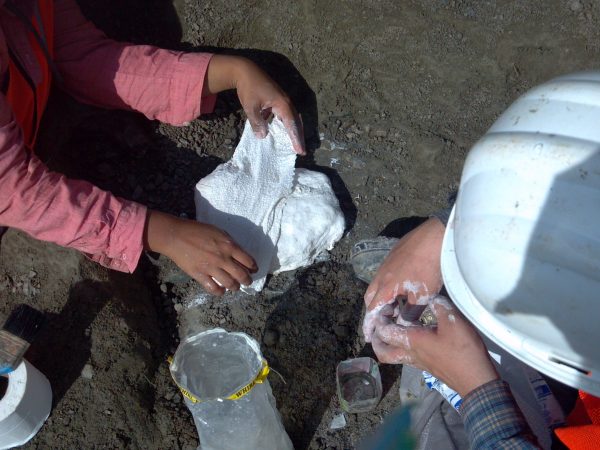
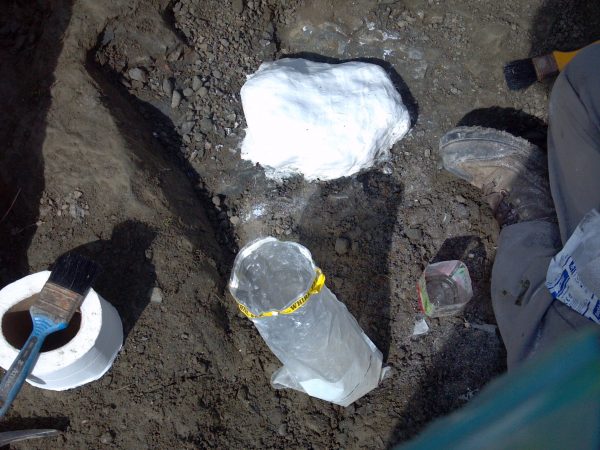
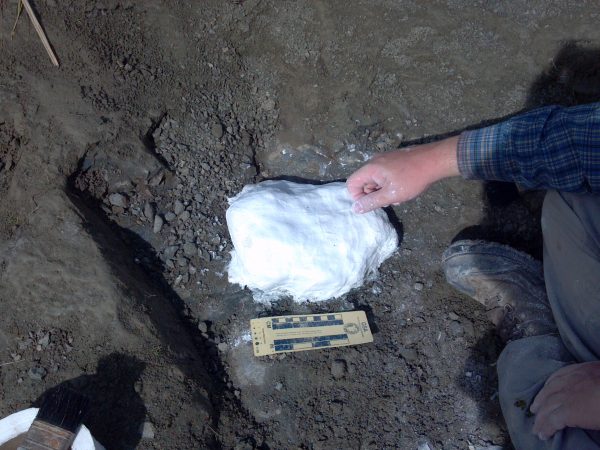
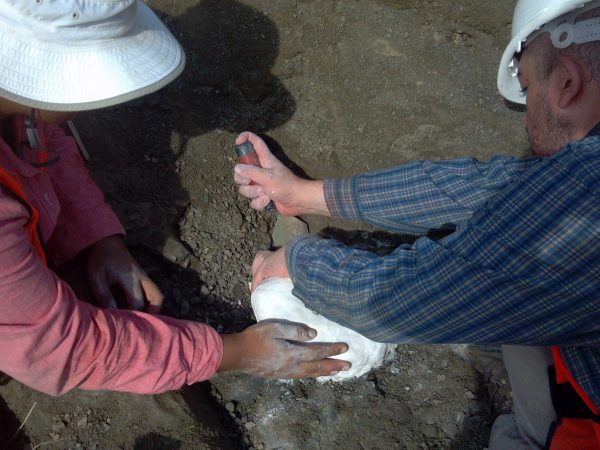
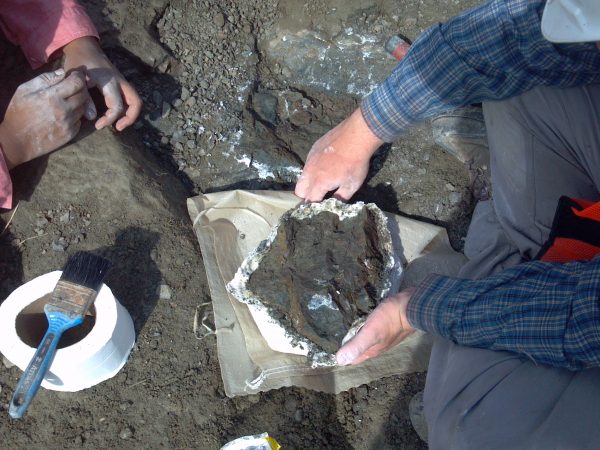
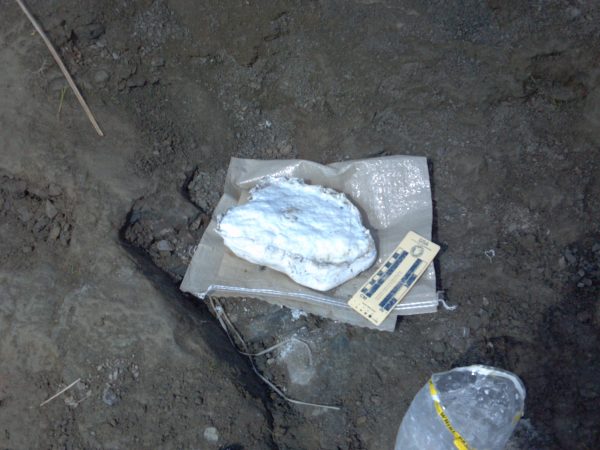
I find this very interesting about the field work being done.